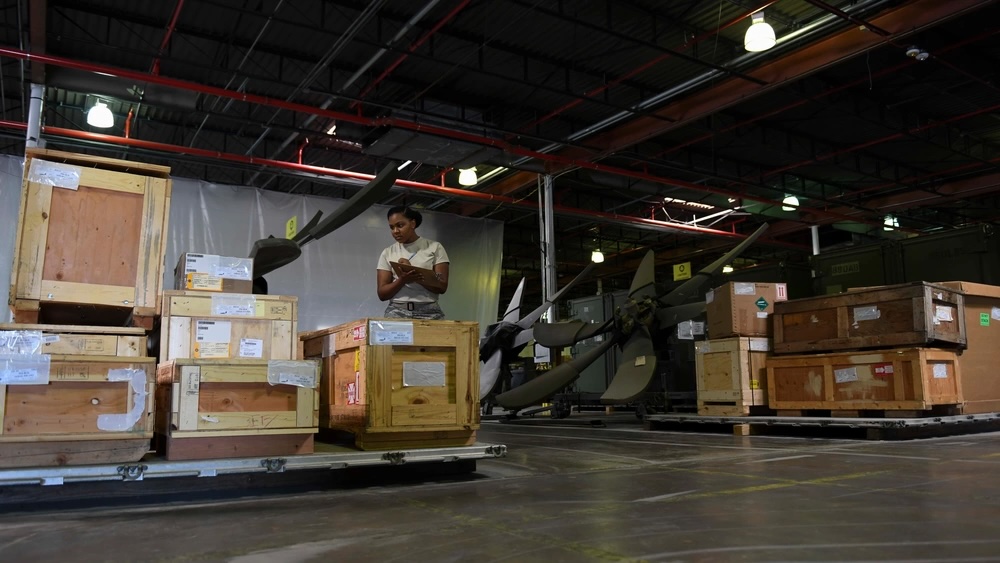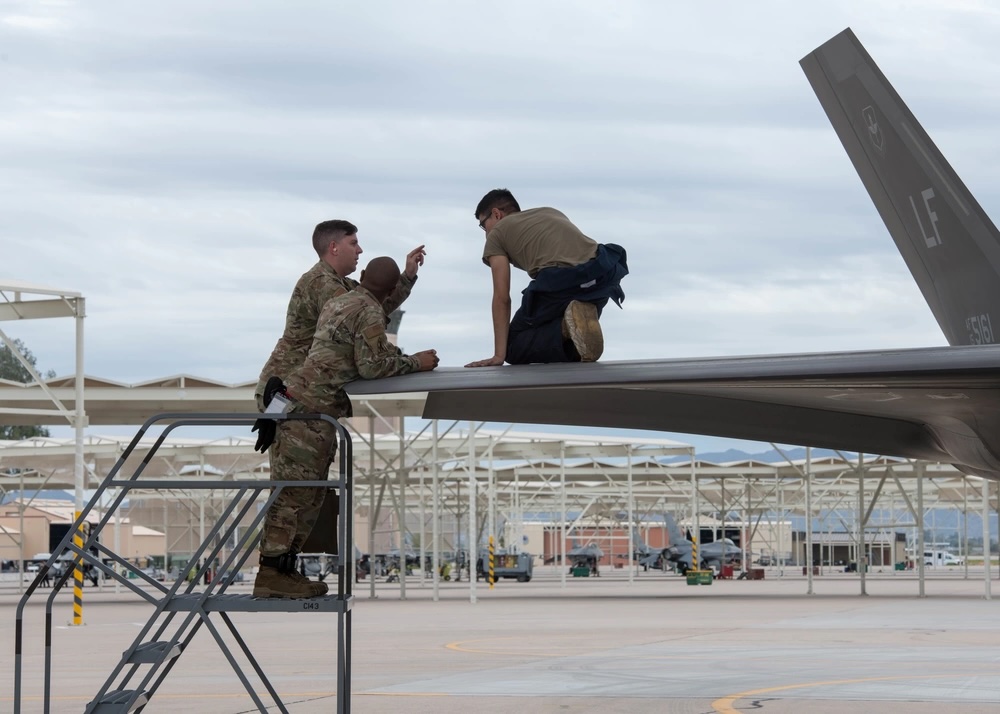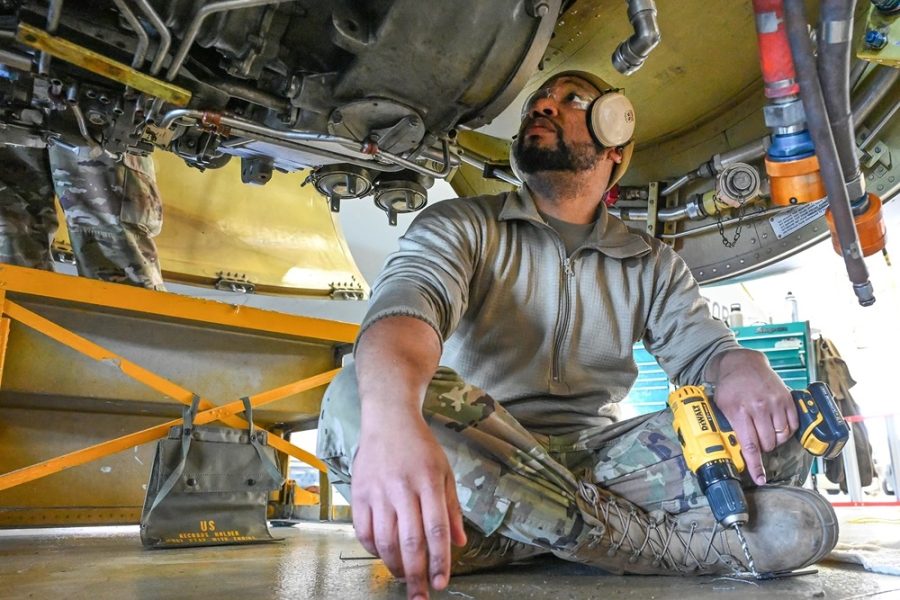The Air Force lacks proper guidance and controls for getting contractors to pay it back for defective spare parts, leaving the service with millions of dollars’ worth of broken equipment and sometimes paying even more money to repair it.
A new report from the Department of Defense Inspector General found that the Air Force did not seek restitution for 45 defective spare parts worth $5.9 million for the C-130J Super Hercules, because Air Force deficiency reporting personnel did not enforce the warranty for those parts, did not have an effective system for tracking those parts, and did not fully understand the warranty requirements.
Beyond the C-130J, the Air Force also could not provide evidence of contractor restitution for 77 defective parts valued at $500,000 for other airframes, including the F-16, F-22, and even the device which arms certain kinds of bomb fuzes.
While the Air Force was paid back for 185 other defective parts valued at $19.4 million, it took an average of 81 days to provide evidence of contractor restitution, leading the watchdog to question the service’s process for holding contractors responsible. Restitution could take the form of payment, repaired parts, or replacement parts.
“These conditions occurred because the Air Force lacked adequate guidance and controls over the contractor restitution portion of its deficiency reporting process,” investigators wrote. “As a result, the Air Force missed opportunities to hold contractors accountable and obtain restitution for defective parts.”

It’s not just a matter of returning taxpayer money; when parts are bad, they put lives at risk. In 2020, an F-16 pilot died when his ejection seat failed to deploy its parachute. Air Force investigators suspected some key parts of the seat may have been counterfeit.
“The Air Force’s official inquiry in the months following the accident found that electronics inside the seat were scratched, unevenly sanded, and showed otherwise shoddy craftsmanship,” Air Force Times reported in 2022.
The DODIG investigation found reports of many other defective aircraft parts, including hazy F-16 cockpit canopies; inadequate fuel tubes for an F-16 engine; flaps that could not be installed on the exhaust nozzle of the B-1B’s engine; and faulty processors for the C-130J weather radar systems. The service seemed to keep few records of which parts they’d received restitution for; investigators noted that it took more than four months for the service to provide evidence it had received $1 million in restitution for defective B-1 exhaust nozzle flaps.
“This information was generally not readily available to Air Force deficiency reporting personnel, and they often had to obtain the evidence from other Air Force organizations, the Defense Logistics Agency (DLA), the [Defense Contract Management Agency], and contractors,” the report said.
An official for Air Force Materiel Command told investigators that Air Force deficiency reporting guidance focuses on the investigation portion: identifying the cause of defective parts, and mitigating risks. But the contractor restitution portion leaves much to be desired. For example, the guidance does not address how to track restitution for defective parts, nor does it lay out the key roles or responsibilities for obtaining that restitution.
Other branches do it differently. Investigators noted that the Army Aviation and Missile Command does not close out its product quality deficiency reports (PQDR) until the Army receives restitution from the contractor.
“An Air Force deficiency reporting official also suggested that keeping the PQDR open until receipt of full contractor restitution would help improve the process,” the report said.
The problems were particularly acute for the C-130J, where investigators found Air Force deficiency reporting personnel did not establish a process to track defective parts; follow Air Force guidance to establish a warranty plan and communicate that to Air Force users; or receive training on or fully understand contract warranty requirements.
“As a result, the Air Force was unable to recover $3 million for defective parts, and paid approximately $200,000 to repair defective parts under warranty, resulting in questioned costs,” the report wrote.
The scale of these issues worried investigators “that similar deficiencies may exist with other major Air Force weapon system programs.”
DOD IG listed several recommendations for AFMC to improve the situation, including:
- Find out if the Air Force can still obtain restitution for defective parts for which evidence of restitution is missing
- Update technical orders to provide details on process, roles, and responsibilities for obtaining restitution for defective parts, then establish a training program for deficiency reporting personnel
- Develop and implement controls and oversight for tracking contractor restitution
- Require C-130J deficiency reporting personnel establish a process for tracking defective parts to make sure they are repaired or replaced by the contractor under warranty
- Develop warranty guidance for C-130J deficiency reporting personnel and communicate it to the relevant parties
- Provide recurring training on warranty requirements for defective parts
- Review other major Air Force weapon system programs to make sure deficiency reporting rules are being followed
AFMC agreed or partially agreed to all of the recommendations, but the DOD IG said it will keep its recommendations open until “we verify that the information provided and actions taken by management fully address the recommendations.”

This report is not the first time the Air Force or the military writ large has been called out for its spare parts practices. In 2023, the Government Accountability Office said lack of Pentagon oversight for F-35 spare parts meant that the F-35 Joint Program Office has been unable to review losses worth tens of millions of dollars.
“The F-35 Joint Program Office does not track or enter these spare parts into an accountable property system of record that would enable it to capture and store real-time changes to property records,” the report stated. “Currently, the prime contractors maintain this information.”
There is a lot of money in spare parts, which at $1.5 billion made up the biggest single item on the Air Force’s unfunded priorities list for fiscal year 2025, but some of that money may be wasted due to aging systems for forecasting parts supply needs. In January, the Air Force paid a quantum computing company $2.5 million to create a more accurate supply chain inventory management system.
“At best, a supply chain forecast is an educated guess,” the company CEO said at the time. “At worst, it is a wild guess.”


